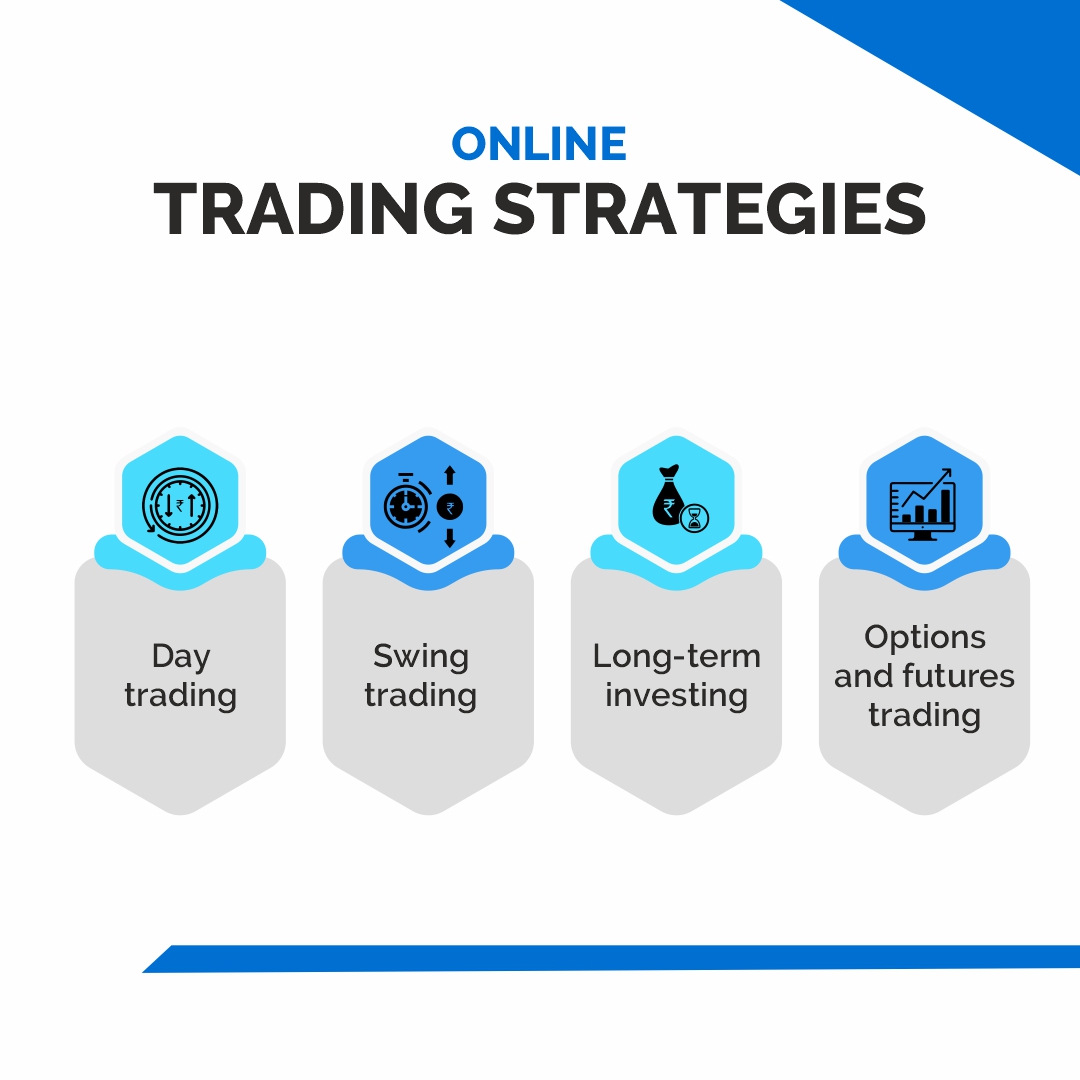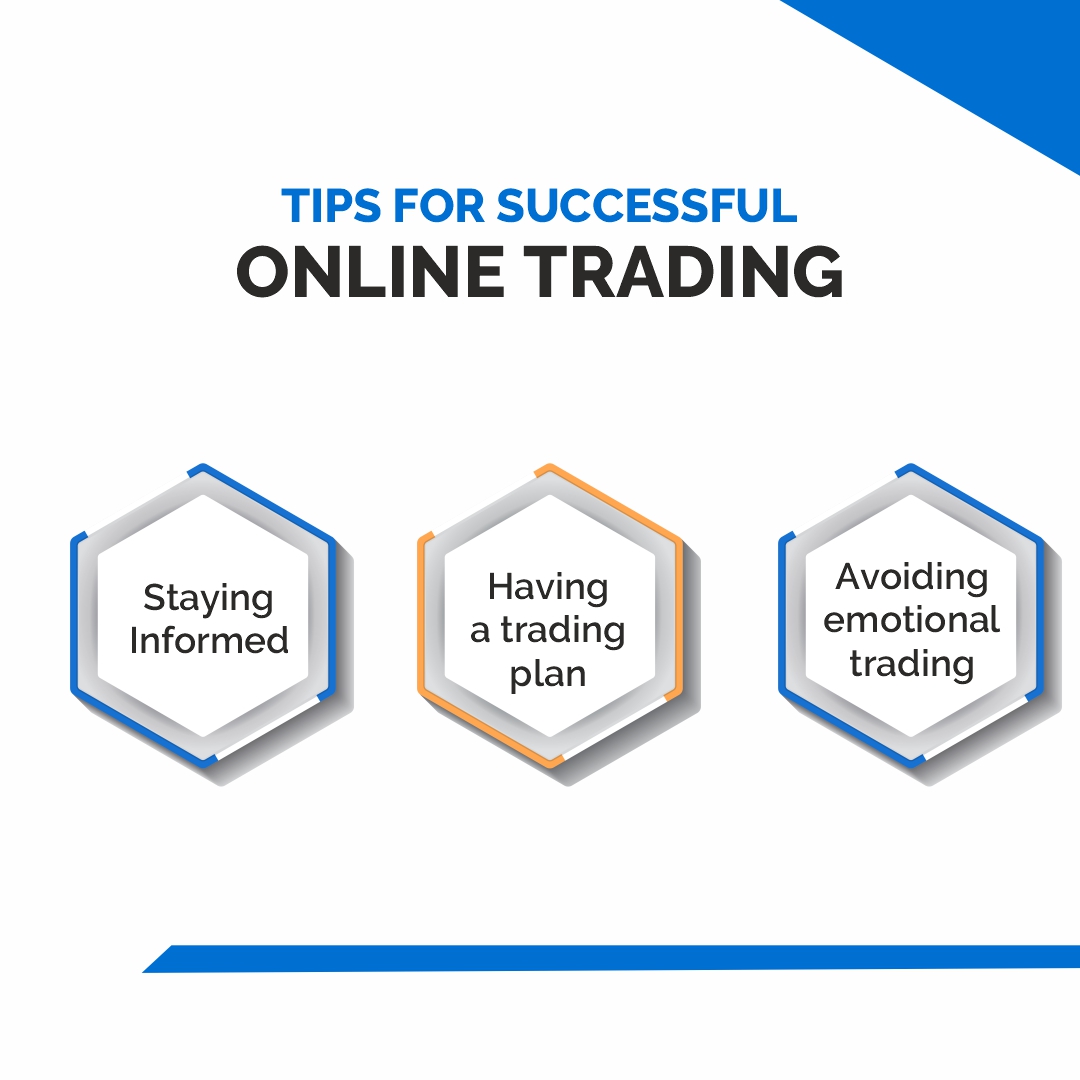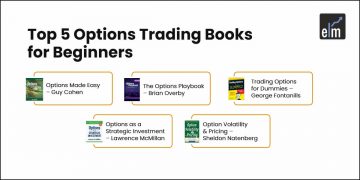How many of you are fascinated about trading in the stock market but also worried about losing money?
If done correctly, stock trading may be financially beneficial. Riding the market’s numerous ups and downs is part of investing in stocks.
Investing has been more practical when online trading was introduced in India. Regarding building long-term wealth, stock market trading is a fantastic choice. However, it can take some time before you can refine your abilities.
Trading stocks has recently become as easy as shopping online. An investor can carry out the task while using a smartphone in a coffee shop. All it needs is a strong internet connection, a 3-in-1 account subscription, a mobile banking app, and enough money in the bank account.
Thankfully, all of the complicated paperwork may now be completed with a single tap or click on a mobile device. On the internet, there are numerous mobile and web trading applications, both free and paid.
An appealing asset class that has the potential to offer significant/high returns is online trading. From the convenience of their homes or offices, traders can profit from a variety of trading options. This entails making investments in various financial products, including stocks, commodities, and bonds. With the advancement of technology, it is now simpler for traders to begin and learn online trading in India.
Table of Contents
Getting Started with Online Stock Market Trading
To start trading in the stock market, you need an online Trading and DEMAT account, let us discuss how you can do the same-
Register today to get certified in Technical Analysis with our Technical Analysis Made Easy: Online Certification Course
1. Choosing a reliable online brokerage
Picking an online broker is the first step in beginning online trading in India. Numerous online brokerage companies provide a range of services, including futures contracts, margin accounts, stock and commodity trading, etc. It’s crucial to compare brokers and choose the one that best meets your demands.
Fees, customer service, convenience of use, security features, and the types of accessible accounts are all important considerations when choosing a broker.
Furthermore, it’s critical to confirm the broker’s dependability and reliability. All of your trading transactions are facilitated by the brokerage, which also looks after your account.
2. Opening a trading account
You have to open demat and trading accounts as the next stage. An online bank account specifically designed for holding shares electronically is known as a demat account. The stock exchange and the investor are connected through this demat account. This account is used to credit or debit any stocks that are purchased or sold.
In a similar vein, a trading account facilitates the purchase and sale of financial instruments. On behalf of your clients, these include commodities, stocks, and bonds. These accounts need to be opened with authorised brokers who are participants in Indian stock exchanges like the NSE and BSE.
You can simply open a trading account and a demat account by submitting the required documents and making an initial deposit. Just follow these steps:
- Assemble the necessary paperwork for the KYC (Know Your Customer) verification process. Your PAN card, address evidence, identity proof, etc. are all included in this.
- Send the application form, either online or offline, to your broker.
- Make an initial/starting deposit in accordance with the minimum amount that your broker requires.
- Await permission for your trading and demat accounts.
3. Funding your account
Using the login information provided by your broker, you can log in once your trading and demat accounts have been opened. You must first deposit money into your account before you can start trading online.
You can do this by depositing money into the broker’s bank account, using online banking, or using net banking. Additionally, keep in mind that any internet trading earnings must be reported for taxation purposes.
How To Trade Your First Stock?
Log into your brokerage’s online account once the money has settled. Pick an order type, choose the stock you want to trade, and then submit the order. Watch to make sure the order is executed after placing it. If you’re utilising market orders, it ought to go through right away.
Your order might not immediately execute if you’re utilising limit orders. Move your limit price closer to the ask price (if you’re buying) or the bid price (if you’re selling) to make the trade happen more quickly.
Market Analysis
Investors and traders use stock analysis as a tool to decide what to purchase and sell. Investors and traders strive to obtain an advantage in the markets by making educated decisions by researching and analysing both historical and recent data.
1. Fundamental Analysis
Focus is placed on data from sources such as financial records, economic statistics, firm assets, and market share in fundamental research.
Investors and analysts often examine the metrics on a business’s financial statements, which include the balance sheet, income statement, cash flow statement, and footnotes, to perform fundamental analysis on a publicly traded company or sector.
An analyst will typically look for indicators of a company’s profitability, liquidity, solvency, efficiency, growth trajectory, and leverage when performing stock analysis on its financial statements. A company’s health can be assessed using a variety of ratios.
2. Technical Analysis
Technical analysis is the second approach to stock analysis. In order to determine the likelihood of future price fluctuations, technical analysis focuses on the analysis of past and present price behaviour.
Technical analysts look at the entire financial market and are mostly interested in pricing, volume, and the factors that drive supply and demand.
Technical analysts frequently use charts because they provide a visual representation of a stock’s trend over a specified time frame. A technical analyst might designate specific places on a chart as a support or resistance level, for instance. Previous lows below the current trade price serve as the support levels, and prior highs above the stock’s current market price serve as the resistance levels.
A break above the resistance level would signal a positive view, while a break below the support level would signal a bearish trend to the stock analyst.
Online Trading Strategies
Now, let us discuss different types of trading strategies that you can implement when trading in the stock market-

1. Day trading
In this type of trade, stocks are bought and sold all on the same day. In the stock market, a single day is defined as 9:15 a.m. to 3:30 p.m. on a weekday (excluding market holidays). In the case of day trading, people keep stocks for a short while or for a long time.
A trader engaged in such a deal must complete it before the market closes for the day. It is well-known for profiting from minute changes in stock NAV.
Day trading involves expertise in financial markets, in-depth knowledge of market volatility, and a sharp feel of the ups and downs in stock prices. As a result, it is generally carried out by seasoned traders or investors.
2. Swing trading
Utilising this type of stock market trading allows investors to profit from transient stock movements and patterns.
Swing trading is utilised to generate profits from stocks within one to seven days of purchase. In order to properly execute their investment goals, traders perform a technical analysis of the stocks to determine the movement patterns they are using.
3. Long-term Investing
Holding various assets, such as mutual funds, securities, shares, and stocks for longer than a year is referred to as long-term investing. Although a year may seem like a long time, it is not long enough to be considered a long-term investment.
The majority of long-term investments have a lifespan of three, five, or ten years. We are aware that the period of time required to lock away a specific quantity of your money is lengthy, but it is worthwhile.
You’ll be astonished at how well your money managed to work for you and make your current needs seem simple. Yes, investments should be made intelligently since when you get your money back, it will be able to help you with a lot of problems in the future.
4. Options and Futures Trading
The two main categories of stock derivatives traded on an exchange are futures and options. These are agreements between two parties for the future exchange of stock assets at a defined price. By fixing the price in advance, these contracts attempt to mitigate the market risks associated with stock market trading.
In the stock market, futures and options are contracts whose prices are based on underlying assets, such as shares, stock market indices, commodities, ETFs, and more.
The fundamentals of futures and options allow investors to lower their future risk by using pre-determined pricing. The direction of price movements, however, cannot be foreseen, so if a market prediction is off, it could result in significant gains or losses. People who are familiar with stock market operations tend to be the main participants in such trades.
Now that we know how to start trading in the stock markets and the different trading strategies that we can employ, it is also important to manage risk in the market.
Let us discuss how we can limit losses and manage risk in the market:
Risk Management
Below are different techniques by which we can manage risk in the market:
1. Diversification
Never put all of your trading eggs in one basket to ensure that you get the most out of it. You’re setting yourself up for a significant loss if you invest all your funds in a single stock or financial instrument.
Therefore, keep in mind to diversify your holdings across industry sectors, market capitalization, and geographic regions. This increases your opportunities while also assisting you in managing your risk.
Additionally, you might come across a situation where you need to hedge your position. When the results are due, think about taking a stock position. Through options, you might think about adopting the opposing stance to help defend your position. You can unwind the hedge once trading activity slows down.
2. Setting stop-loss orders
The price at which a trader will sell a stock and take a loss on the transaction is known as a stop loss point. This frequently occurs when a trade does not turn out as a trader had hoped.
The points are intended to stop the belief that “it will come back” and to stop losses before they get out of control. For instance, traders frequently sell a stock as soon as they can if it breaks below a crucial support level.
A take-profit point, on the other hand, is the cost at which a trader will sell a stock and profit from the transaction.
At this point, the potential upside is constrained by the inherent dangers. For instance, traders might want to sell a stock if it is nearing a crucial resistance level after making a significant upward move before a period of consolidation begins.
3. Risk tolerance assessment
Many day traders adhere to what is known as the 1% rule. In essence, this rule of thumb advises against investing more than 1% of your capital or trading account in a single transaction.
Therefore, if you have Rs. 10,000 in your trading account, you shouldn’t have more than Rs. 100 invested in any one instrument.
For traders with accounts under $100,000, this tactic is typical; some even increase it to 2% if they can. Many traders may decide to use a lower percentage if their accounts have higher balances.
That’s because the position grows in proportion to the size of your account. The best way to limit your losses is to keep the rule below 2%; if you go over that, you run the risk of losing a significant portion of your trading account.
Tips for Successful Online Trading
Below are some of the tips that you can follow for successful online trading:

1. Staying Informed
Quality research is one of the most important aspects of intraday trading that traders must always remember. The most common mistake most traders make is overlooking the importance of doing research.
Apart from basic trading knowledge, traders should also be up to date with the latest stock market news and updates.
Make a list of stocks that you are confident of and would like to trade in. Watch as much finance-related news as you can and also read the latest blogs on financial websites to succeed in online stock trading.
2. Having a trading plan
According to the renowned Chinese military general Sun Tzu, “Every battle is won before it is fought.” This expression implies that wars are won through planning and strategy rather than through actual combat.
Similar to this, successful traders often say, “Plan the trade and trade the plan.” Similar to how planning ahead can make the difference between success and failure in battle.
Taking profit and stop loss orders are two important ways that traders can plan ahead when trading. Successful traders are aware of the prices they are willing to buy and sell stocks for.
3. Avoiding emotional trading
For a portfolio to successfully navigate the shifting financial market tides, active monitoring is crucial. However, controlling the behavioural urges of emotional buying and selling that might result from closely monitoring the ups and downs of the market is also crucial for individual investors.
It is common to become caught up in media hype or panic, causing investors to buy at market peaks and sell during cycle dips. This suggests that investors have a tendency to pile into stocks at market tops and sell at market bottoms.
Now, let us come to taxes, when trading online there are certain tax implications that one should know:
Tax Implications of Online Trading
1. Capital gains tax
Within a year of the sale of equity shares listed on a stock exchange, the seller may realise a short-term capital gain (STCG) or suffer a short-term capital loss (STCL). When shares are sold for more than they cost to buy them, the seller makes a short-term capital gain. Gains from short-term investments are taxed at 15%.
If long-term capital gains (LTCG) on shares and equity-oriented mutual funds reach Rs. 1 lakh in a fiscal year, they are subject to a 10% tax (plus surcharge and cess). Profits from the selling of shares or equity-oriented mutual funds held for more than a year are referred to as LTCG.
2. Tax-saving investment options
There are also many tax-saving investment options available as shown below:
| Investment Option | Returns | Lock-in Period | Tax Benefits under Sections of IT Act, 1961 |
| Unit Linked Insurance Plan (ULIP) | Returns vary from plan to plan | 5 years | under Section 80C and Section 10 (10D) |
| Sukanya Samriddhi Yojana (SSY) | 8% p.a. | 21 years | under Section 80C, Section 10 (1D), and |
| Public Provident Fund (PPF) | 7.1% currently | 15 years | under Section 80C |
| Employee Provident Fund (EPF) | 8.15% p.a. | 5 years | under Section 80C |
| Senior Citizen Saving Scheme (SCSS) | 8.20% p.a. | 5 years | under Section 80C |
| National Pension Scheme (NPS) | 9% to 12% | Till Retirement | under Section 80C, Sec 80 CCD(1B), and Section 80 CCD(2) |
| National Savings Certificate (NSC) | 7.7% p.a. | 5 years | under Section 80C |
| Tax Saver FDs | 5.5% to 7.75% | 5 years | under Section 80C |
| ELSS Fund | Returns vary as per performance of underlying assets | 3 years | under Section 80C of the IT Act, 1961 |
| Life Insurance | Returns vary from plan to plan | Varies from plan to plan | under Section 80C and Section 10 (10D) |
Let us discuss the various trading tools and platforms that one can use for trading online:
Online Trading Tools and Platforms
The three interface types that are offered by the top online trading platforms in India are
- Desktop Trading
- Web-Bases Online Trading Platform
- Trading Platform Powered By Mobile Apps
The desktop-based trading interface is the quickest of the three and is best for experienced traders who need to place prompt orders.
In a desktop-based trading platform, shortcut keys can be used to place orders. You can install the trading software on your laptop or PC also.
Google Chrome and Firefox users can use the web-based trading platform, which employs the URL (website address) for login. When compared to desktop-based systems, web-based trading platforms move a little more slowly.
Because they make it simple to trade anytime, anyplace, mobile apps are growing in popularity. The majority of stockbrokers now offer trading apps for iOS and Android.
Conclusion
We can conclude that trading is a simple way to enter the stock markets and offers a variety of advantages once you get started. You can start trading online without much difficulty by comprehending market patterns and creating a strategy that fits your risk tolerance and objectives. Additionally, a number of brokers provide learning materials to aid in improving market comprehension and formulating successful strategies.
Learn the basis of Stock trading with our expert webinar on stock trading for everyone
Frequently Asked Questions (FAQs)
What are the basics of online trading?
Through an electronic interface, online trading makes it possible to buy and sell financial assets such as mutual funds, stocks, bonds, equities, commodities, sovereign gold bonds, derivatives, and ETFs. A difficult process has been reduced to a few clicks thanks to online trading.
How to learn online share trading?
To start trading online in India, you don’t need any prior experience. As you apply for a Demat account with a broker, you can discover the procedures. You can begin trading in India utilising straightforward steps for delivery-based trading after opening a Demat and trading account. Although it is important to learn about the stock market and how it wors through various online stock market courses.
Can I earn 500 daily from the share market?
The question that now arises is whether it is possible to make Rs 500 a day on the stock market. Yes, you can, if you have the necessary information, aptitude, experience, self-control, and market timing skills. However, the majority of people fail in this endeavour and attribute their failure to the market.
What are the basic requirements for starting online share trading?
To open a Demat account, a form for opening a Demat account online must be completed. basic information, like your PAN number, bank information, identity evidence, residence proof, and date of birth, etc. The electronic document needs to be signed, and a copy will be delivered to your registered mobile number.









